As one of the most widely-used online advertising platforms, Google Ads provides a wide range of options for businesses to reach their target audience and achieve their marketing goals.
However, with so many different campaign types to choose from, it's easy to feel overwhelmed and unsure of which type of campaign will best serve your business goals. Whether you're looking to increase brand awareness, generate leads, or boost sales, understanding the different campaign types can help you create a successful advertising strategy on Google Ads.
In this blog, we'll explore each type of Google Ads campaign, how they work, and the pros and cons of each. So, let's dive in and discover what campaigns Google Ads has to offer!
Search
What Is It?
Search ads are the “original” ad type that are shown exclusively on Google’s search results page. They look like regular search results but are labeled as “sponsored” (previously marked as “ad”). These can be accompanied by different ad extensions like phone numbers, locations, and image thumbnails.

How Does it Work?
You bid on keywords that align with your offerings, and your ads are shown when users search for those keywords (or related keywords) on Google…assuming you haven’t exhausted your ad budget.
Who/What is it Best For?
Virtually any business can utilize Search Ads, but businesses whose goals are to drive sales or leads will find search ads particularly effective, as the nature of search ads is so dependent on “commercial intent” searches. Search ads are also great for beginners to Google Ads, and/or those who are looking for a more straightforward campaign setup.
Different Types of Google Search Ads
Responsive search ads
In real-time, Google automatically rotates through a maximum of 15 headlines and four descriptions that you provide, generating personalized ads that cater to specific queries. (Pictured Above)

Call ads
These ads focus on your business’ phone number to drive calls. They feature your phone number, business name, industry, a link to your website, and two 90 character lines of ad text provided by you.
Dynamic Search Ads
Google generates Dynamic Search Ads for you by utilizing ad copy taken from a single or multiple webpages you input, as well as a brief description provided by you.
These ads are visually indistinguishable from regular Search ads when displayed on the search engine results page. However, instead of bidding on specific keywords, Google pulls content directly from your website and uses that to display ads to users who’s searches align with your ad content.
Dynamic Search Ads are advantageous for businesses that have well-developed websites and wish to utilize them (and Google) to revamp their advertising copy strategy, as well as those who may have less time to dedicate to keyword research and ad creation.
Pros and cons of search ads
Pros
- The easiest campaign type to set up.
- Generates higher-intent traffic through keyword targeting (which equals higher ROI).
Cons
- There’s little room for branding and creativity.
- Search ads are highly competitive and can result in high costs-per-click for many industries.
Display
What Is It?
Image-based ads that are shown on a variety of websites within the Google Display Network––a group of more than 2 million websites, videos, and apps. These websites include Google-owned websites like Google Finance, Gmail, Blogger, and YouTube.
How Does it Work?
Ads are targeted towards audiences, topics, and website placements. Contextual keyword targeting (showing your ads on websites with content similar to keywords you provide) can also be used, but is much less common.
Who/What is it Best For?
Because of their broad reach and potential for high volumes of relevant user impressions, display ads tend to be most successful at driving brand awareness. They are also great for retargeting users who have previously interacted with your ads or website, and making sure you stay at the top of their mind.
Types of Google Display Ads
Standard display ads
Pre-created static ads that are uploaded within the Google Ads platform.
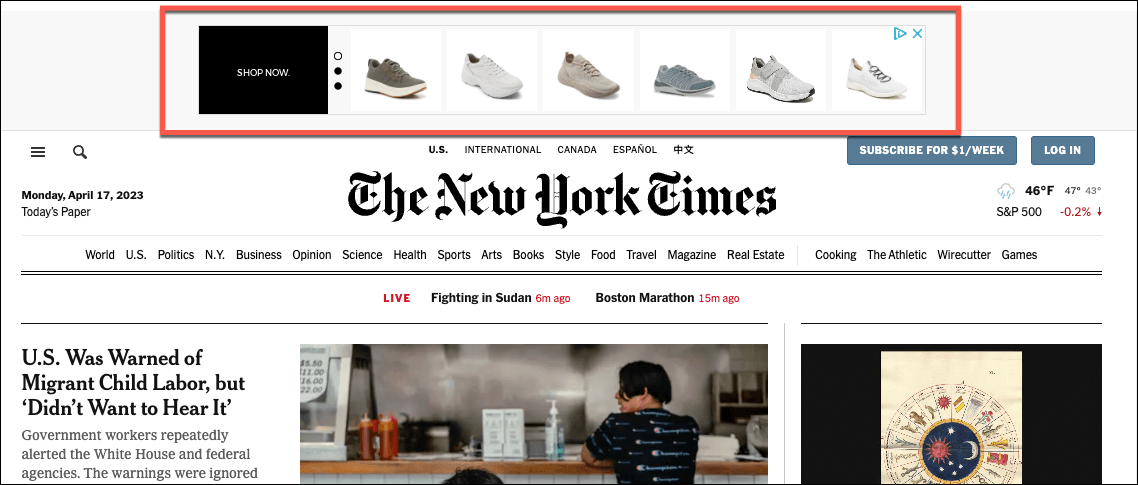
Responsive display ads
Google rotates through different combinations of assets you provide (images, ad copy, logo, etc.), similar to responsive search ads. These ads tend to have more longevity than the standard alternative, as they can be adapted to virtually any website in Google’s display network, as long as you provide the necessary assets.
Pros and Cons of display ads
Pros
- They tend to have a cheaper cost-per-click than Google Search ads.
- More opportunities for branding and creativity.
- Ads with visuals can appeal to new audiences, lending themselves to brand awareness goals.
Cons
- Targeting for display ads can be too broad, resulting in irrelevant impressions.
- Mobile display ads are often clicked accidentally (have you ever accidentally hit that banner ad while you were playing Candy Crush?).
- Ad-blockers can prevent certain users from being shown your ads.
Performance Max
What Is It?
Performance Max automates the process of goal-based advertising across various networks of Google by consolidating your campaign types into one place. Performance Max allows your ads to appear on several platforms such as Google Maps, SERP, YouTube, Gmail, Discovery networks, and Google Display Network. These ads appear exactly as they do in their individual campaigns.
Note: Smart Shopping campaigns were automatically converted to Performance Max in September of 2020.
How Does it Work?
By providing Google with creative assets and information about your products or services and a main objective, the platform can automatically create video, display, discovery, shopping (if applicable), and search ads across various placements.
This involves the use of machine learning to determine the most effective asset combinations and placements that yield the best results. Essentially, you are entrusting Google to generate ads that are optimized for your campaign's success.
Who/What is it Best For?
- Ideal for advertisers who lack the time or resources to optimize their campaigns for each channel.
- For those who have specific, measurable goals.
- For those who find it difficult to optimize different campaign types for one location.
- Those who wish to tap into new and unexpected customer segments and show their ads across a variety of platforms.
- For those who want to explore new geographic markets.
- Performance Max is not ideal for beginners to the Google Ads platform, as there are a multitude of different features and settings that need to be optimized.
Pros and Cons of Performance Max campaigns
Pros
- Manage assets and target multiple placements all from one campaign.
- Google is given more control of your campaign optimizations.
Cons
- Google provides very little performance data, so advertisers are unable to take away valuable information on how to further optimize their campaigns.
- Google is given more control of your campaign optimizations. You can see we added this to the “pros” section as well, as less user control can be both a negative or a positive depending on your situation.
Standard Shopping
What Is It?
Shopping ads are visual ads that appear in Google’s search results when users search for products. These are visible in Google’s Search and Shopping tabs.
How Does it Work?
Google creates shopping ads based on a product feed that lives in Google Merchant Center. These feeds contain product information (“attributes”) like color, quantity, price, etc. Products can be divided into different “product groups”, which are the search ad equivalent of ad groups. Shopping ads do not utilize keywords, but instead, match user’s product searches to the items in your product feed. However, negative keywords can still be used to prevent your shopping ads from showing up for certain user searches.
Shopping ads can also feature important details about your business like “Black-owned” or “price drop”.
Who/What is it Best For?
Exclusively for ecommerce advertisers who wish to increase their sales online, as well as local retailers hoping to drive more traffic to their brick and mortar stores (more on this below).
Types of Shopping Ads
Product shopping ads
These are the standard product ads you see on Google’s search engine when you search for products online. These include a photo of the product, as well as information like price and user ratings (if applicable).
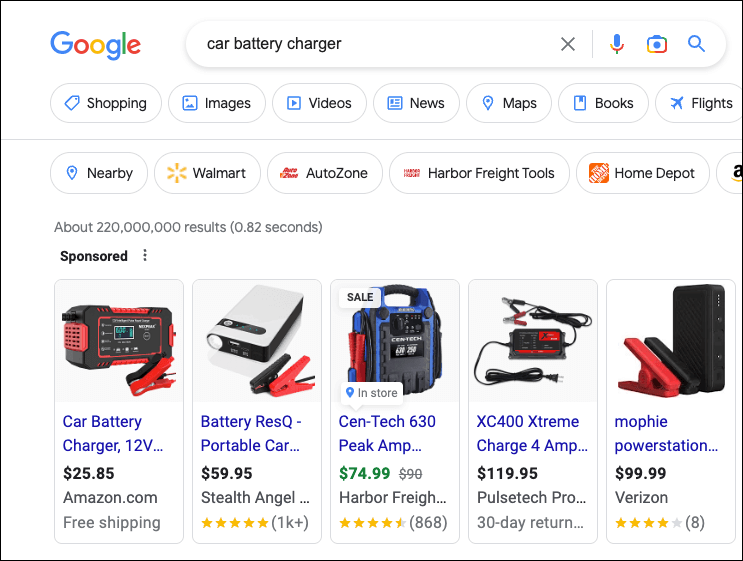
Local inventory ads
Your store inventory can be submitted into Google Merchant Center, allowing nearby users to see whether those products are available at locations near to them.

Pros and Cons of Shopping Ads
Pros
- They display photos of specific products, which tend to draw people in more effectively than text based ads.
- If relevant, more than one shopping ad can appear for a single search. For instance, if you sell different types of women’s sneakers and someone searches for “women’s sneakers”, multiple products can appear at one.
- If you’re running search and shopping ads, they can both show up in the same search––doubling your ad exposure.
Cons
- They require a Google Merchant Center setup and integration with your ecommerce site, which can become time consuming if you have things like: multiple ecommerce websites, unique product taxing, etc.
- On that same thread, Google is very specific about the product information they require to run shopping ads, and it’s not unusual for all products to need some kind of adjustments in GMC in order for Google to show them. This can be extremely tedious if you have more than a dozen or so products you wish to advertise.
Discovery
What Is It?
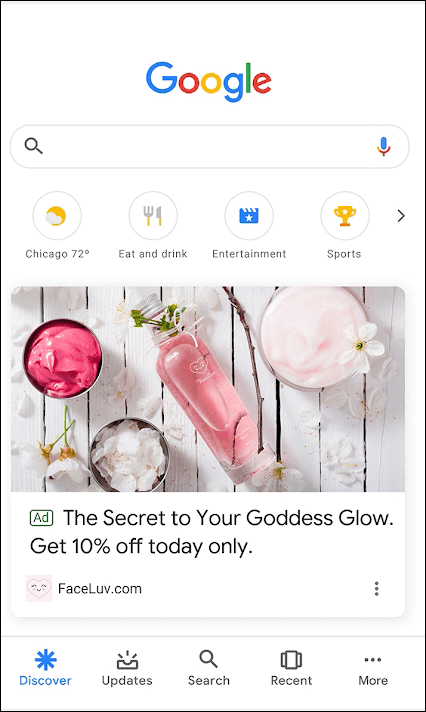
This is another automated campaign type that enables advertisers to display ads on all Google-specific platforms. These placements include Youtube, Google’s Discover feed, and the Promotions and Social tab feeds in Gmail.
How Does it Work?
Similar to Smart campaigns, advertisers can provide assets like images and ad copy, and Google creates ads and manages their placements for you, and uses machine learning to
Who/What is it Best For?
These campaigns are best for advertisers looking to drive brand awareness (hence the name “Discovery”).
Pros and Cons
Pros
- Because login is required for most Google platforms, Google has a leg up in terms of audience targeting insights. This allows them to deliver more relevant and highly-targeted ads to your audience.
- Some Discovery ads are interactive, like carousel ads you can scroll through.
Cons
- You have little control over your placements.
Video
What Is It?
Video ads that are shown across YouTube as well as websites and apps that run on Google’s video partner sites.
How Does it Work?
Similar to Display campaigns, you choose your ad placements on YouTube and Google’s partner sites to your desired audience.
Who/What is it Best For?
Again, similarly to Display campaigns, video ads are ideal for advertisers looking to drive brand awareness. They can also be particularly beneficial for businesses who have products or services that are difficult to convey through text and image ads.
Video Ad types
There are several different ad formats:
Skippable In-Stream Ads
Play before, during, or after other videos. After 5 seconds, the viewer has an option to skip the ad.
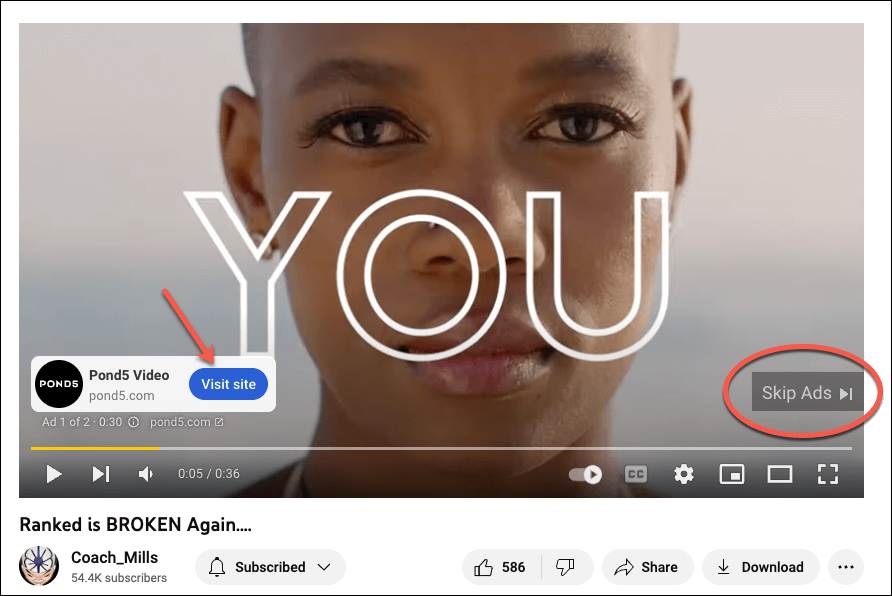
Non-Skippable In-Stream Ads
These ads are 15 seconds or shorter, and play before, during, or after other videos. Viewers don't have the option to skip the ad.
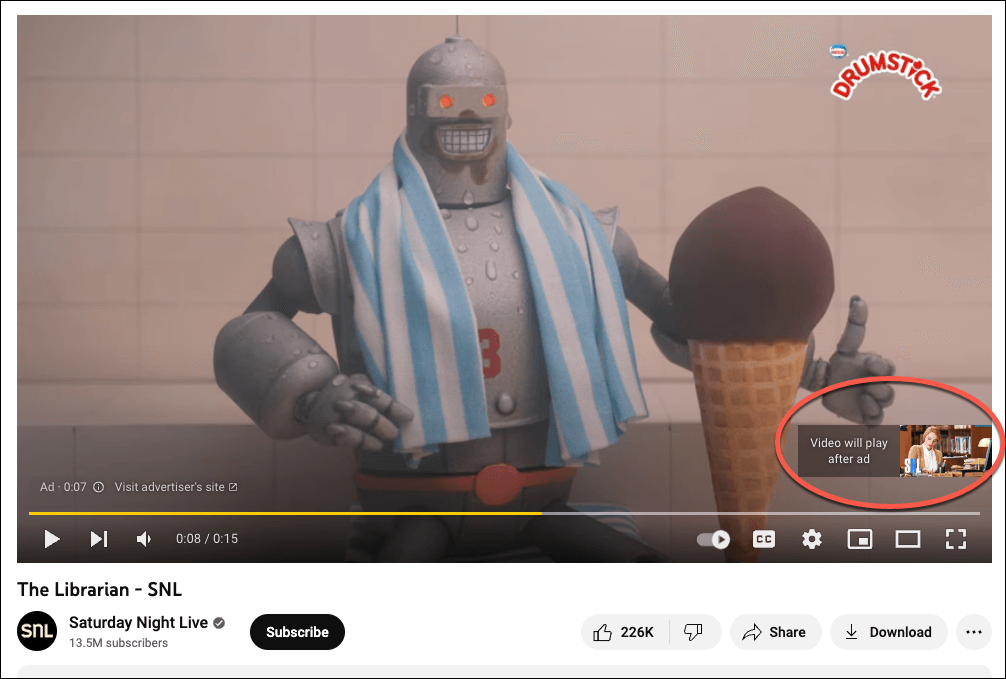
In-Feed Video Ads
In-feed video ads consist of a thumbnail image from your video with some text. While the exact size and appearance of the ad may vary depending on where it appears, in-feed video ads always invite people to click to watch the video. The video then plays on the YouTube watch page or channel homepage.

Bumper Ads
These are 6 seconds or shorter, and play before, during, or after another video. Viewers don't have the option to skip the ad.
Outstream Ads
Mobile-only ads and only appear on websites and apps running on Google video partners. They begin playing with the sound off, and viewers can tap the ad to unmute the video. Outstream ads are designed to increase your video reach at an efficient cost.
Masthead Ads
Native video-based ad format that appears in the YouTube Home feed across all devices.
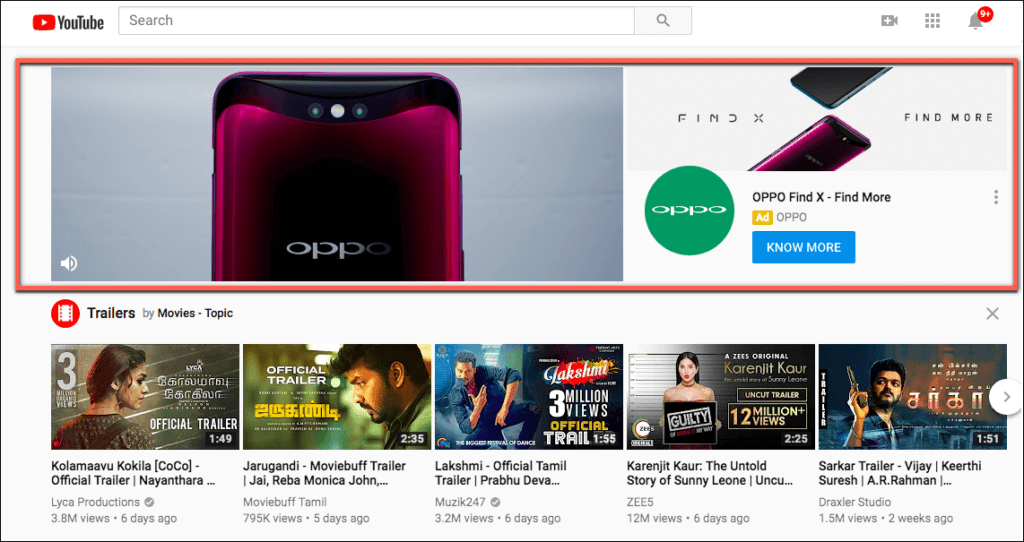
Pros and Cons
Pros
- Video can convey more emotion and personality than text or static display ads.
- A variety of video formats to choose from.
Cons
- Creating engaging videos can be time and budget-consuming.
- Video advertising on Youtube is extremely competitive.
App Campaigns
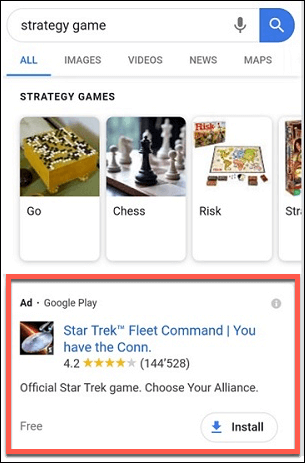
What Is It?
App campaigns allow advertisers to promote apps across Google’s properties including Search, Google Play, YouTube, Discover, and their Display Network.
How Does it Work?
Similar to other campaign types, advertisers submit text and image assets from their app store listing, and Google will design and test a variety of ads to find which asset combinations are most successful.
Who/What is it Best For?
This probably goes without saying, but advertisers who own an app.
Types of App Campaign Ads
App installs
Ads that encourage users to install your app or game.
App pre-registration
Ads intended to build hype and awareness around apps before their release date. Users are then able to pre-register for the app.
App engagement
Ads delivered to customers who have already installed your app, and encourage them to take specific in-app actions.
Local Service Ads
What Is It?
Local Service Ads are the only type of ads that are run and managed from a separate location from the Google Ads platform. These ads are only available for certain local service industries, and only in certain locations.
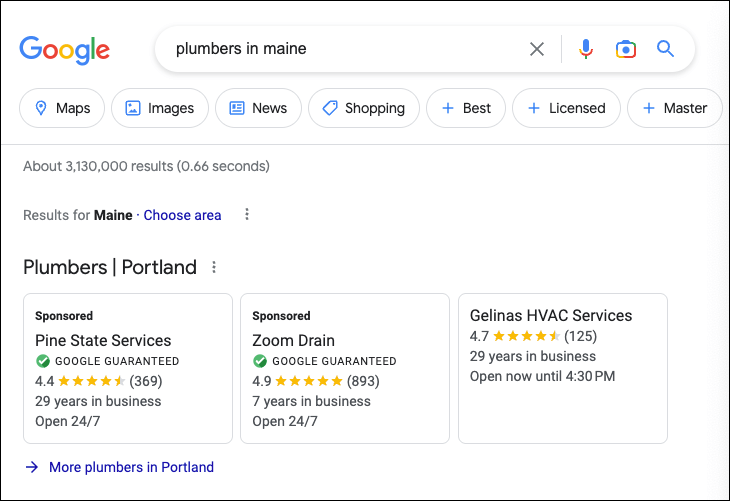
How Does it Work?
Advertisers must fill out their Google Business Profile and then begin a thorough verification process and, once approved, these ads then appear at the top of Google’s search results with a green check mark or badge. Users are given the option to call, book, or message you when they click on your ads.
Local Service Ads are also unlike other campaign-types in that you only pay for each lead you receive.
Who/What is it Best For?
Must be local service businesses.
Types of Local Service Ads
Google Screened LSAs
Ads for white collar industries like lawyers, accountants, etc. Google offers protection for customers who are unsatisfied with their services with a reimbursement up to $2,000 (as of 2023).
Google Guaranteed LSAs
For blue-collar industries like contractors and plumbers.
Pros and Cons
Pros
- You only pay for the legitimate leads you receive.
- Ads show above all paid and organic traffic.
- Reviews on your Google Business profile appear within your LSA profile, which in turn influence your ranking.
Cons
- Advertisers must maintain an average rating of 3.0 or above for their ads to remain active.
So, which campaign type is right for you?
When deciding which Google Ads campaign types to use, remember to consider your business objectives, target audience, and advertising budget. By understanding the unique strengths and limitations of each campaign type above, you can make informed decisions and create effective ad campaigns that meet your advertising goals and maximize your ROI.
If you’re still feeling unsure or overwhelmed, we can help! Whether you need advice on which campaign types are right for you, or you want someone else to take the wheel entirely––flyte can help you make the most out of your Google advertising. Chat with us today!

Rachel was born and raised in southern NH, and became an official Mainer in 2016. With an academic background in psychology, she brings to flyte a passion for people and a fascination with what motivates them. This, combined with her artistic skillset, made the decision to pursue a career in marketing a no-brainer.
With a big sense of humor and sentimental nature, she becomes the “morale booster” of whatever group she’s in.
Outside flyte Rachel can usually be found doodling in her sketchbook, doing spot-on impressions (if she does say so herself), or binging the latest Netflix competition show.
